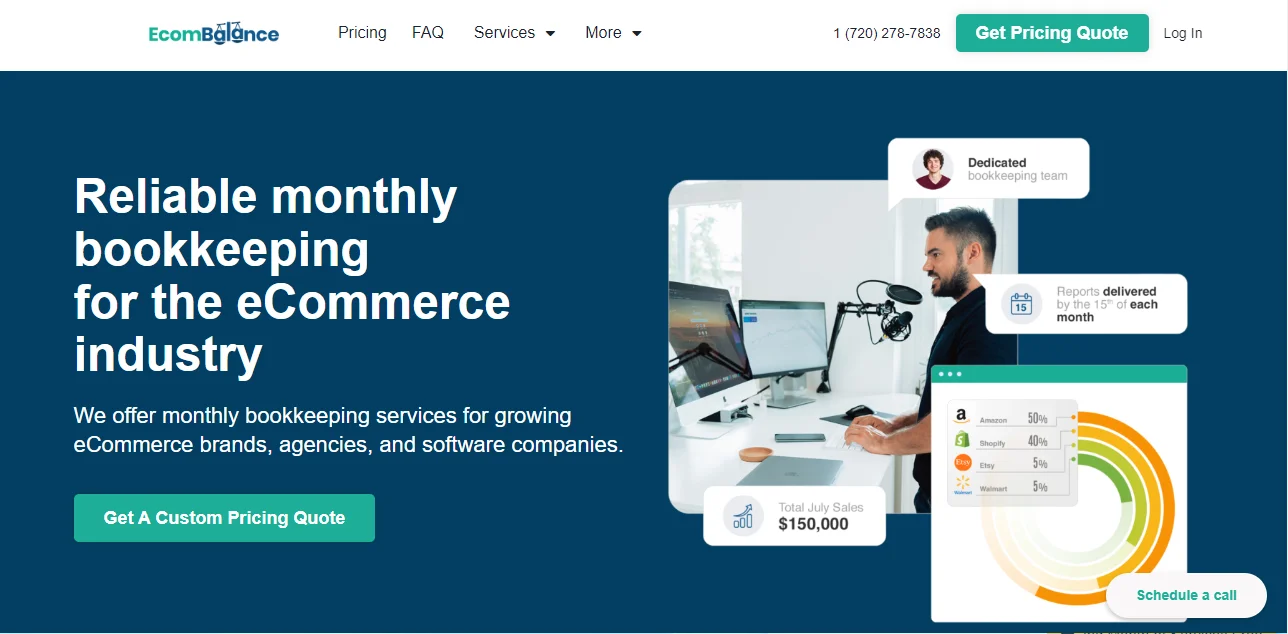
Despite shifting market conditions, at least half of US companies are still pursuing M&A opportunities. For eCommerce businesses — whether Shopify brands, Amazon FBA sellers, or niche online stores — financial due diligence is the cornerstone of a successful acquisition. If this stage is slow, disorganized, or error-prone, deals fall apart.
That’s why more eCommerce buyers and sellers are using due diligence data rooms (VDRs). These platforms offer secure, centralized environments for sharing sensitive financial data, tracking questions, and collaborating across teams. But technology alone isn’t enough. Mistakes still happen — and they’re surprisingly consistent across deals.
Let’s explore the most common financial due diligence errors in eCommerce acquisitions, and how VDRs and automation help prevent them.
Poor Financial Document Organization
In eCommerce, financial record span multiple platforms: Shopify, Amazon, Stripe, PayPal, QuickBooks, and more. Without a clear structure, files get lost in email threads or dumped into random folder. Reviewers waste time, and trust erodes.
A VDR enforces structure. Categories like revenue, inventory, tax, and expenses mirror the due diligence checklist. When documents are where people expect them, confidence grows.
To go further, a standardized document naming convention—for example, “2024_Q3_Revenue_Report_Shopify.pdf”—helps both internal and external teams identify the correct files instantly. Many acquirers also include metadata tags like “verified” or “pending update,” which makes it easier to filter documents when a deal reaches advanced review stages.
In high-value eCommerce deals, document consistency can literally shave days off diligence timeline. Buyers noticed when sellers maintain meticulous records; it signals professionalism and transparency.
Version Sprawl and Inconsistent Naming
Duplicate “final” files confuse teams. One version shows $1.2M in revenue, another shows $1.1M. Which is correct?
Modern VDRs lock in version control. Only one live file exists, while older versions are archived. Built-in comparison tools highlight changes, so reviewers don’t chase edits.
Beyond just preventing confusion, version tracking offered an audit trail—a chronologicals record of every update, who made it, and when. This featured becomes invaluable during disputes, audits, or regulatory review. It also reassures investors that numbers haven’t been manipulated late in the process.
Think of it as financial GPS: every edit, upload, or note leaves a breadcrumb. If you need to prove compliance or verify an update, it’s right there in the VDR’s version log.
Over-Broad Access Rights
Too often, external advisors or junior staff get access “just in case.” Sensitive financials are exposed—or worse, edited.
Role-based permissions solve this. Most users get view-only access. Temporary links expire automatically. This protects financial integrity and speeds up review.
In practice, assigning permissions based on need-to-know principles minimizes the risk of leaks or accidental data alteration. For cross-functional teams, granular access—like “Finance only,” “Legal only,” or “Executive view”—ensures that each stakeholder focuses on their relevant section without breaching confidentiality.
A well-configured VDR also allows activity monitoring. Administrators can see who viewed or downloaded each document and when. This transparency not only supports cybersecurity compliance but can also reveal buyer interest trends (for example, if they keep revisiting the tax section).
Scattered Q&A and Lost Context
Buyers often ask: “Why is revenue down in Q2?” If that question lives in a long email chain, context disappears.
VDRs offer file-specific Q&A. Questions are tied to documents, owners are assigned, and answers are stored next to the evidence. This keeps everyone aligned.
Centralized Q&A threads eliminate redundant follow-ups, reduce miscommunication, and create an automatic paper trail of every discussion related to the transaction. In more complex cross-border deals, this structure also supports translation or regulatory auditing requirements.
Moreover, structured Q&A reduces emotional friction. Instead of emails that get buried or misunderstood, stakeholders interact transparently through documented questions and responses—creating trust between buyer and seller.
Financial and Bookkeeping Red Flags
In eCommerce, financial due diligence must go beyond basic statements. Key areas include:
- Revenue Accuracy: Are all transactions recorded? Are refunds and chargebacks properly accounted for?
- Inventory Valuation: Is stock reconciled with accounting records? Are SKUs overstated or outdated?
- Tax Compliance: Do we get different taxation aspects (VAT, sales tax, and platform-specific fees) right (e.g., Amazon FBA)?
Accounting application used to identify inconsistencies and notify users of errors are automated accounting tools, such as QuickBooks, Xero, or Bench, combined with VDRs.
Buyers increasingly use API integrations to sync real-time sales and cost data directly from platforms like Amazon or Shopify into their diligence environments. This eliminate manual exports and ensures financial snapshot reflect live data, not outdated spreadsheets.

Missed Red Flags Without Automation
Manual reviews miss small but damaging details: unsigned invoices, inconsistent dates, or outdated tax certificates.
Automated due diligence features—like metadata checks and required-field prompts—catch these issues before they escalated. They can also flag anomalies like negative revenued or mismatched totals across months.
Integrating AI-driven document parsing tools adds another layer of security. These systems can read scanned PDFs, detect missing signatures, and cross-verify totals across multiple documents. For large eCommerce portfolios, automation can reduce diligence time from weeks to days.
Overlooking Cross-Border Requirements
Global eCommerce deals bring complexity. Different country have different tax, privacy, and disclosure regulation.
VDRs designed for cross-border diligence let you separated data by region, host files locally, and apply retention rule that match local law. For instance, GDPR complianced in the EU required storing customers data in approved regions, while U.S. dealed might prioritized SOC 2 or ISO 27001 certifications.
Buyers conducting acquisitions in regions like the EU, UK, or Southeast Asia must also verify VAT registration, customs documentation, and payment processor complianced. Failure to do so can result in costly post-close liabilities.
Advanced VDRs even allow localization options—multiple language interfaces, regional timestamps, and jurisdiction-based accessed rule to streamline global collaborations.
Weak Post-Close Archiving
After closing, auditors or regulators may request evidence. If files are scattered, teams scramble.
Strong VDRs export a full, indexed archive in a stable format. This protects both buyer and seller and saves weeks of reconstruction.
Archiving is not just about storage—it’s about audit readiness. A properly archived VDR package should include:
- Indexed folders mirroring the diligence structure
- Time-stamped communication logs
- Final signed agreements and certificates
- Metadata confirming who accessed each document
Well-documented archives can make post-close integration and tax preparation smoother, especially when third-party auditors require proof of diligence compliance.
Buy-Side Coordination Gaps
Finance, legal, and tech teams often run in parallel. Without a central hub, requests overlap and findings clash.
Using the VDR as a buy-side hub keeps findings centralized, risks documented, and responsibilities clear. Each team can collaborate without breaking confidentiality. Legal counsel can review contracts while finance audits statements—all without stepping on each other’s work.
When integrated with project management tools (like Asana or Notion), VDRs can also serve as living due diligence dashboards—tracking progress, bottleneck, and outstanding request.
A Practical Routine for eCommerce Due Diligence
To avoid last-minute surprises, follow this routine:
- Mirror a clear folder structure with consistent naming
- Apply least-privilege roles and review access weekly
- Keep Q&A inside the VDR, tied to evidence
- Stress-test performance before go-live
- Confirm VDR pricing for the full lifecycle
- Enable automated financial checks
- Configure for cross-border due diligence rules
- Plan a complete archive from day one
- Use the VDR as the buy-side diligence hub
Additionally, establish an early data request list during deal negotiation. This gives sellers time to prepare completed files before due diligence officially begins. Schedule weekly sync meetings between buyer and seller teams to track progress and resolved bottleneck quickly.
Future Trends in eCommerce Due Diligence
The next phase of eCommerce due diligence will be shaped by predictived analytics and AI-driven forecasting. Instead of reviewing historical performance alone, acquirers will analyze customer lifetime value, repeat purchase rates, and churn predictions directly within VDR dashboards. Blockchain-based verification of invoices and supplier data is also emerging, offering immutable transaction proof during audits.
As sustainability and ESG reporting grow in importance, due diligence will expand beyond finances to include environmental and social metrics — from supply chain transparency to carbon footprint analysis. Buyers who adopt these innovations early will gain not only faster deal cycles but also greater confidence in long-term business resilience.
What Is EcomBalance?

EcomBalance is a monthly bookkeeping service specialized for eCommerce companies selling on Amazon, Shopify, eBay, Etsy, WooCommerce, & other eCommerce channels.
We take monthly bookkeeping off your plate and deliver you your financial statements by the 15th or 20th of each month.
You’ll have your Profit and Loss Statement, Balance Sheet, and Cash Flow Statement ready for analysis each month so you and your business partners can make better business decisions.
Interested in learning more? Schedule a call with our CEO, Nathan Hirsch.
And here’s some free resources:
- Monthly Finance Meeting Agenda
- 9 Steps to Master Your Ecommerce Bookkeeping Checklist
- The Ultimate Guide on Finding an Ecommerce Virtual Bookkeeping Service
- What Is a Profit and Loss Statement?
- How to Read & Interpret a Cash Flow Statement
- How to Read a Balance Sheet & Truly Understand It
Conclusion
Disorganized files, unclear access, scattered Q&A, surprise costs, and overlooked financial details all slow deals and damage trust. But with the right setup — including a secure VDR and automated accounting tools — eCommerce companies can turn diligence into a disciplined, efficient process.
Whether you’re acquiring a Shopify brand or selling an Amazon FBA business, strong financial due diligence is your foundation for speed, trust, and credibility.
In a digital-first economy where online stores can change hands overnight, organized diligence is competitive advantage. A buyer who can move swiftly and confidently wins the deal. A seller who can present clean, verifiable records earns higher valuations and faster closings.
The future of eCommerce M&A belongs to those who blend human expertise with automation—using technology not just as storage, but as a strategic enabler of clarity, compliance, and collaboration. The right VDR is more than a data room—it’s the digital heartbeat of your transaction.




